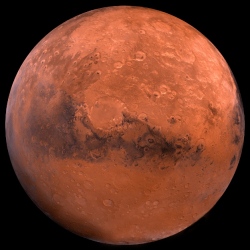
An ancient ocean once covered nearly half of the northern hemisphere of Mars making it a more promising place for alien life to have gained a foothold. The huge body of water spread over a fifth of the planet’s surface, as great a portion as the Atlantic covers the Earth, and was a mile deep in places.
In total, the ocean held 20 million cubic kilometres of water, or more than is found in the Arctic Ocean, the researchers found. Unveiled by Nasa on Thursday, the compelling evidence for the primitive ocean adds to an emerging picture of Mars as a warm and wet world in its youth, which trickled with streams, winding river deltas, and long-standing lakes, soon after it formed 4.5bn years ago.
The view of the planet’s ancient history radically re-writes what many scientists believed only a decade ago. Back then, flowing water was widely considered to have been a more erratic presence on Mars, gushing forth only rarely, and never forming long-standing seas and oceans.
“A major question has been how much water did Mars actually have when it was young and how did it lose that water?” said Michael Mumma, a senior scientist at Nasa Goddard Space Flight Center in Maryland.
Writing in the journal, Science, the Nasa team, and others at the European Southern Observatory (ESO) in Munich, provide an answer after studying Mars with three of the most powerful infra-red telescopes in the world.
